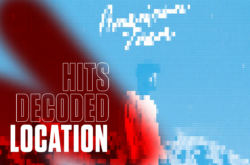Season 2 of Stranger Things has finally begun!
This series has garnered a dedicated fanbase for its nostalgic qualities and paranormal thrills, and the soundtrack composed by Kyle Dixon and Michael Stein of the synth band “Survive” has made quite a buzz. The soundtrack has an immediately identifiable sound, consisting almost entirely of sparse analog synth textures. You can find various interviews and discussions online regarding the synthesizers and equipment used to create the score, but that’s only half of the music – today we’ll be taking a look at three compositional techniques that help set the soundtrack’s mood, focusing specifically on the show’s main theme.
1. Not just a triad
Even if you haven’t seen the series, you’ve probably heard the mysterious synth arpeggio that serves as the main melody of the show’s theme:

The arpeggio outlines a C major 7th chord, which is a great harmonic color to create emotional ambiguity. One emotion a major 7th chord commonly evokes is the melancholy of nostalgia (Michael Giacchino’s extensive use of major 7th chords in the theme to Up, Married Life, comes to mind). Although the sweeping synth arrangement of Stranger Things creates a chillier feel than Giacchino’s heartfelt arrangement, this sense of nostalgia is definitely embedded in both works. To further explore this idea, let’s take a listen to the arpeggio as a pure C major triad:

Even though only one note has been removed (the B natural), notice how “still” the arpeggiated triad feels – it doesn’t quite pull on your heartstrings in the same way.
2. Outside your instinctive key
Another important aspect to note is the key of the piece – we may be quick to assume that the piece is in C major because of the chord that the entire piece is centered around. However, this isn’t the case – the piece is actually in E minor. This means that the arpeggio isn’t outlining the tonic (IM7) chord of a major key, but rather the submediant (VIM7) chord of a minor key. Having a minor tonal center against the major 7th arpeggio accomplishes the overall dark mood, while still incorporating a sprinkle of childlike wonder.
3. Minimalism – less is more
Throughout the piece the arpeggio doesn’t adapt to outline the shifting chords around it – this allows for the phrase to have changing emotional implications based on its relationship with the chord it’s placed against from moment to moment. Having one repeating idea that doesn’t modulate or shift very much (if at all) is a core concept of minimalism. Minimalistic writing is currently very “in” in the world of film scoring – this is evident in the soundtracks of other popular shows such as Mr. Robot and Daredevil. Minimalist techniques are great for film because they can convey a wide range of emotions using a small idea that will easily stick with listeners far after they turn off the TV (or close their Netflix browser tab).
What’s your favorite part of this enigmatic theme? Let us know in the comments below.
November 2, 2017



